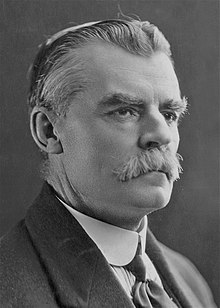
Back ماثيو تشارلتون Arabic ماثيو تشارلتون ARZ Matthew Charlton German Matthew Charlton Spanish Matthew Charlton French Matthew Charlton Polish Matthew Charlton SIMPLE Matthew Charlton Swedish
Matthew Charlton | |||||||||||||||||||
|---|---|---|---|---|---|---|---|---|---|---|---|---|---|---|---|---|---|---|---|
 | |||||||||||||||||||
| Leader of the Opposition | |||||||||||||||||||
| In office 25 January 1922 – 29 March 1928 | |||||||||||||||||||
| Prime Minister | Billy Hughes Stanley Bruce | ||||||||||||||||||
| Deputy | Albert Gardiner James Scullin | ||||||||||||||||||
| Preceded by | Frank Tudor | ||||||||||||||||||
| Succeeded by | James Scullin | ||||||||||||||||||
| Leader of the Labor Party | |||||||||||||||||||
| In office 16 May 1922 – 29 March 1928 Acting leader: 5 January – 16 May 1922 | |||||||||||||||||||
| Deputy | Albert Gardiner James Scullin | ||||||||||||||||||
| Preceded by | Frank Tudor | ||||||||||||||||||
| Succeeded by | James Scullin | ||||||||||||||||||
| Assistant Leader of the Labor Party | |||||||||||||||||||
| In office 30 September 1921 – 16 May 1922 | |||||||||||||||||||
| Leader | Frank Tudor | ||||||||||||||||||
| Preceded by | T. J. Ryan | ||||||||||||||||||
| Succeeded by | Frank Anstey | ||||||||||||||||||
| |||||||||||||||||||
| |||||||||||||||||||
| Personal details | |||||||||||||||||||
| Born | Matthew Charlton 15 March 1866 Linton, Colony of Victoria | ||||||||||||||||||
| Died | 8 December 1948 (aged 82) Lambton, New South Wales, Australia | ||||||||||||||||||
| Resting place | Sandgate Cemetery, Sandgate | ||||||||||||||||||
| Political party | Labor | ||||||||||||||||||
| Spouse |
Martha Rollings (m. 1889) | ||||||||||||||||||
| Education | Lambton Public School | ||||||||||||||||||
| Occupation |
| ||||||||||||||||||
Matthew Charlton (15 March 1866 – 8 December 1948)[1] was an Australian politician who served as leader of the Australian Labor Party (ALP) and Leader of the Opposition from 1922 to 1928. He led the party to defeat at the 1922 and 1925 federal elections.
Charlton was born in Linton, Victoria, but as a child moved to Lambton, New South Wales. He left school at a young age to work in the coal mines, initially as a hurrier. Charlton became prominent in the trade union movement, and in 1903 was elected to the New South Wales Legislative Assembly for the Labor Party. He switched to federal parliament in 1910. Charlton was an anti-conscriptionist, and remained with Labor after the party split of 1916. He was elected party leader in early 1922, following the death of Frank Tudor. He increased Labor's vote at the 1922 election but suffered a backwards slide in 1925. He resigned as leader in early 1928, succeeded by James Scullin, and left politics later that year.